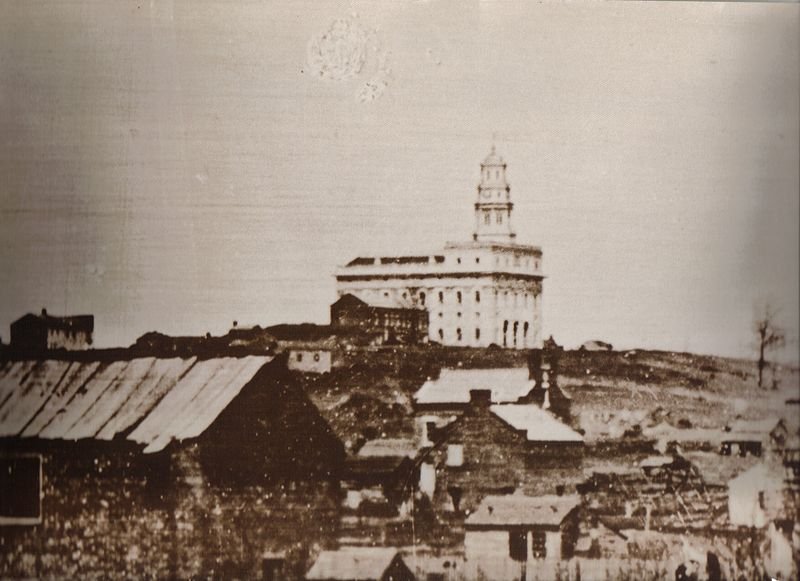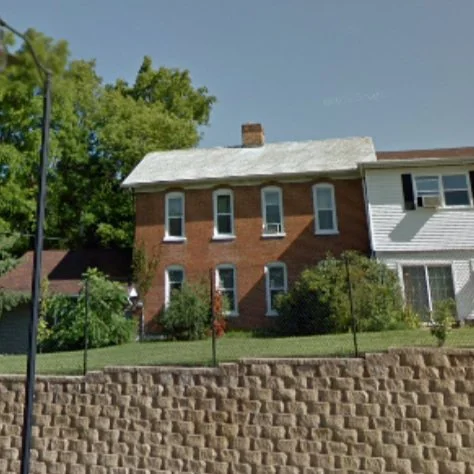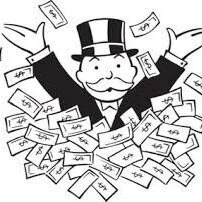The Monroe Youngs and the Mormon Youngs
In recent posts I’ve pushed deeper into the history behind our local theater, the Goetz Theater, and new readers may well wonder what pilgrim counterfeiting has to do with the 1930s movie business. In Monroe, WI the connection between these two things is a Mormon connection.
There are two odd circumstances in Leon Goetz’s life that have links to the Church of Latter-Day Saints:
Firstly, in 1910 the teen-aged Leon took out a submarine escape pod patent; this patent was filed by the top D.C. patent lawyer of that time. Concurrently, Republican Party big-wig Mark Hanna was arranging illegal submarine manufacturing and sales to the British government via business partners on the Canada side of the Great Lakes. This scheme had an earlier incarnation via the machinations of Brigham Young’s son John Willard Young. Therefore, Leon— likely guided by Ludlow henchmen— was trying to cash in on a Mormon-originated illegal arms deal scheme. (It was illegal because it violated US neutrality.)
Secondly, in 1931 Leon Goetz tried to branch out into the film distribution business by purchasing a film from a bankrupt Brigham Young-family supported film company in Salt Lake City. Leon had the intel to purchase film “All Faces West” as it was auctioned on the courthouse steps in Utah’s capital, 1,300 miles dead west from Monroe, WI. One would need to be in the Mormon film industry ‘loop’ to have that sort of information in time to purchase the movie reels.
As I dug into Monroe, WI’s “Bonelatta” counterfeiting gang history (active late 1857- summer 1871), this Mormon connection became clearer. Joseph Smith Jr and Brigham Young were heavily involved in counterfeiting, which was a serious problem in the pre-1870s United States. Counterfeiting networks were even used by President Lincoln as a way of milking Northern states to finance his war. It appears to me that the Monroe Bonelatta gang was a ‘branch’ of Smith’s counterfeiting network back East whose members declined to participate in the Mormon religion, but still maintained the criminal network contacts.
In an upcoming post I will provide a statistical analysis of Monroe’s 1860 census and give a hard list of whom this ‘branch’ probably consisted— the members who also ran legitimate businesses, at least. (President Grant’s administration was not rigorous prosecuting members of the gang, so I cannot prove these 1860 residents were members.) Until then, probable candidates are Arabut Ludlow, Monroe’s leading war financier, as well as our likely arch-madame Almira Humes. Both were die-hard supporters of Lincoln’s Republican Party and Universalists, as were members of the Smith family back in Vermont. (The Smith family sided with the Universalist faction vying for control of Dartmouth College in the years prior to Joseph Jr. setting up Mormonism.) Daniel Young and his wife also attended the Universalist Church after having settled in Monroe.
Apart from the human element above, there are other reasons why I believe there is a connection between Joseph Smith Jr’s cult and the Bonelattas:
1) Many of Monroe’s founders who benefited from Bonelatta criminality were born in Vermont and were there in their early teens (when gang-members were recruited) when Joseph Smith Jr’s counterfeiting crew were at their peak in the VT-NY area.
2) Bonelatta counterfeiting relied on NY contacts for the plates they used to print money, just like Joseph Smith Jr.’s 1837 Kirtland Safety Society scam. The high-level banking and printing technology contacts for both gangs came from the same geographic area.
3) Bonelatta gang members operated without violence in areas with a notable Mormon presence.
Mormon involvement in organized crime is a topic that is rarely discussed in legacy media, so I will provide some history to this phenomenon. Two excellent books on the subject are Secret Combinations: Evidence of Early Mormon Counterfeiting 1800-1847, by Kathleen Kimball Melonakos and A Nation of Counterfeiters: Capitalists, Con Men, and the Making of the United States by Stephen Mihm.
The Smith family had been involved in confidence schemes since at least 1800, which eventually resulted in their having to flee westward— a process which involved writing a spurious history of the American Indians and founding Mormonism.
In 1833, after having failed to set up a power-base in Missouri, Joseph Smith Jr tried to build a “Kingdom of God” for himself in Kirtland, Ohio. He would attempt this a handful of times in different locales before alighting in Salt Lake City, Utah. In order to achieve this end (i.e. raise property prices and begin a nucleus for a city), Smith’s top action-item was to build a temple in Kirtland on credit, a good chunk of which he sourced back in New York City. NYC men gave him this credit despite the fact that Smith Jr’s unethical business practices were widely known in VT by this time:
Smith persuaded people to loan him money in both small and large amounts. On page 201 of “No Man Knows my History” [a biography of Joseph Smith Jr. by Fawn McKay Brodie, a Freudian and ex-Mormon], there is a list of the debts he still owed years later, which only included the notes that Oliver Cowdery had co-signed from the Kirtland days. It amounted to over $33,000, but did not include all the money Smith owed. The loans were taken out in small amounts between $600 and $8,000. Smith also obtained several other smaller loans from the Halstead Hains and Company in New York City for $5,600. Somehow Hyrum [Smith] and Oliver Cowdery obtained creidt for over $60,000 mercantile goods from New York City…
New York City was a central counterfeiting center. They [Smith Jr. et alia] would have had opportunities to obtain counterfeit money on their several trips there. William Hall, who was a Mormon from 1840 to 1847, published that they bought counterfeit money using a classic device:
“They would go some of them to distant banks in the United States, where they had an understanding, and purchase at ten dollers per hundred such quanitites of bank-bills of that bank, competely engraved, but unsigned, as they might want for circulation. These were taken home, and of course the president and cashier’s names signed onto them, in the most correct style…”
The Kirtland, OH Mormon temple of 1837, designed by Joseph Smith Jr. Smith abandoned this building when he ran from the collapse of his “Kirtland Safety Society” financial scheme. Smith Jr. had to keep his own personal army after this debacle.
I put it to readers that this foul-play was only possible because of contacts the Mormons had with banking elites back on the East Coast. Issuing bills was one of the most sensitive business operations banks could participate in and the use of bank plates would have been jealously overseen by board members. Sales of printing plates from recently-failed banks could only occur with the blessing of liquidating authorities.
In a twist on the classic counterfeiting play described above, Joseph Smith Jr founded his own (unchartered and therefore illegal) bank in Kirtland, OH in 1836 named the “Kirtland Safety Society” which he described as an “anti-bank”. It immediately began issuing its own small-denomination notes, contrary to anti-inflation laws which forbid such denominations at that time [Melonakos]:
But the Kirtland “anti-bank” began issuing $1, $2, and $3 bills almost immediately after Oliver Cowdery returned from Philadelphia in January 1837 with $150,000 in already printed notes. After those were distributed, they issued more notes, using the same engraving plates Cowdery had obtained in New York City.
While the Mormons were engaging in this inflationary (theft) activity, irresponsible bankers in NYC failed to maintain adequate gold and silver reserves to support the number of bills they were printing, creating the inflationary (theft) pressure and unsound banking practices that lead to the Panic of 1837. The Mormons operated as a western regional wing of the eastern criminal financial establishment. These mafioso-style ties take generations to establish.
The Bonelatta gang also sourced their high-level engraving work from New York contacts. Joshua D. Miner and his man Tom Ballard were their primary NYC engraving partners, but this location was rich with under-employed engravers who could make illegitimate printing plates as easily as legitimate ones. The Bonelattas used printing plates from the United States Treasury (made in NYC, denominations $1, $100 and $500); $2 plates issued by the “National Shoe and Leather Bank of New York”; and plates from three “national” banks in Poughkeepsie, NY (Farmers & Merchants, First National and First City Bank).
Original issue (legitimate/ 1863 or later) from the NY National Shoe and Leather Bank, front. Courtesy unitedstatespapermoney.com
Original issue (legitimate/ 1863 or later) from the NY National Shoe and Leather Bank, back. Courtesy unitedstatespapermoney.com Their moral failings aside, the artistry of men like Tom Ballard is breathtaking.
Both Midwestern counterfeiting gangs relied on NY technology and financial contacts, without which they would not have achieved their aims. These contacts existed over a long period of time. Napoleon Bonaparte Latta was in operation from at least 1853, while his father had been in the business far longer. Joseph Smith’s family had been engaged in counterfeiting (‘passing’ the bills) since at least the 1810s; Joseph Smith Jr. since the 1820s; while the greater Mormon leadership was involved from the time of its inception (late 1820s) through Brigham Young’s leadership at least (dead 1877). The Smith family may even have been printing money themselves by the 1820s, as they counted a number of itinerant printers among their acquaintances. Melonakos quotes Vermont sources describing how the Book of Mormon was first printed in a cave near Manchester, Vermont which would be a typical location for a counterfeit money press during this time. (Melonakos, p 195.)
Kirtland Safety Society banking notes may have been printed in Philadelphia or New York, but the design above seems rushed and lacking complexity. (This is a bill from 1837, nearly thirty years prior to the National Shoe and Leather Bank pictured above.
Joseph Smith Jr. did not print anything on the back of this Kirtland Safety Society bill, front pictured above.
New York would only become more prominent as a center for financial crime. By the 1900s the focus of Mormon criminal activity had shifted eastward again to New York City and Washington D.C. NYC detectives of this period saw the Brigham Young family, and Mormons in general, as little better than a mafia-style criminal organization. The behavior of Brigham’s son John Willard Young— who was involved in the ritualesque murder of a former NYC prostitute among other crimes— gave them good reason to hold this view.
My point here is that the NY connection was a common denominator for the Bonelatta and Mormon crews. In the case of the Mormons, this connection only became stronger after 1871. Of course our 1890s Monroe, WI press magnates— William Wesley Young and Art Young— both returned to NYC to make their precocious publishing careers… the newspaper/book printing industry being the daylight occupation of counterfeiters until the 1890s when Italian gangs (allegedly) took over. WW and Art were probably the last ones ‘on the boat’ from Monroe in this regard.
I am in a position to share what this Bonelatta-Mormon synergy looked like on the ground during its heyday in Monroe, WI. The genealogy of the Monroe Miner family gives us insight into how this synergy operated in practice.
Joshua D. Miner, the link between Napoleon Bonaparte Latta and Salmon P. Chase in D.C., had relatives in Monroe who moved here 1) at the same time Napoleon did (Rev. Samuel Ebert Miner), as well as 2) at the height of the Bonelatta Gang’s criminal prestige in 1869, Daniel S. Young (William Wesley and Art Young’s father). Daniel’s mom and dad were married in Geauga County, Ohio on November 25th, 1834.
Image taken from the marriage records of Geauga County, Ohio. Stephen Young and “Lois” Miner were Danl (Daniel) Young’s mother and father. Danl began to spell his name “Daniel” sometime after relocating to Monroe; he appears as “Danl” of Monroe, Green County WI for the 1870 census, but “Daniel” by 1880. Bonelatta prosecutions began in summer 1871.
Geauga County is the same county in which Louisa Miner was born, on 4 Jun 1818, in the township of Chester.
Kirtland, Ohio has become a suburb of Cleveland, and is about 8 miles from Chester, Geauga County, Ohio where Louisa Miner and Stephen Young were married in 1834.
Chester is only 8 miles from Kirtland, Ohio, epicenter of the infamous 1837 Mormon counterfeiting scandal surrounding the ‘Kirtland Saftey Society’ I described above. When this scandal erupted in November the Mormons— including Joseph Smith Jr.— were run out of town.
Louisa Miner and Stephen Young had their first child, Danl [he used “Daniel” after 1870], on August 12th, 1838 in Stephenson County, Illinois. Therefore, Louisa and Stephen left Ohio between 1835-38; a window which includes the time Joseph Smith Jr. fled, though the Stephen Youngs went to Illinois, rather than to Missouri with “the saints”. Just one year later predatory actions by the Mormon community would lead to their being driven out of Missouri to Illinois.
Journeys in the American Midwest were very difficult at this time and for Danl to have been born in August means Louisa was pregnant with what was likely her first child by December of 1837. No children were born to the pair between 1834-37, though stillborn children may not have been recorded. (Art never mentions any such siblings in his biographies; they may well have existed.) No one would undertake such a move with a pregnant woman, especially one prone to miscarry, unless they absolutely had to. Therefore either a personal crisis forced Stephen’s move in late 1837/8, or he moved earlier, prior to Louisa’s pregnancy, within the December 1835-November 1837 period— making the window of their departure more narrowly coincide with Joseph Smith Jr’s.
Now, it’s possible that Louisa and Stephen’s migration had nothing to do with the Mormon exodus even though it happened at about the same time. The likelihood of that possibility shrinks considering Louisa was almost certainly related to NYC counterfeiting king-pin Joshua D. Miner, whose distribution network in the upper Midwest (Bonelatta) worked hand-in-hand with pre-existing Mormon counterfeiting networks further south, and both networks relied on NY banking contacts.
Counterfeiting networks were inter-generational, extended-family affairs at this time; networks expanded via marrying daughters to other crime families or sons/cousins/uncles moving westward. Counterfeiters would settle in places which supported their trade: too wild for law enforcement; yet near economically developed regions; and close to borders where law enforcement jurisdiction was ‘fuzzy’. The series of images below give a rough idea of how these optimal settlement “fronts” shifted Westward at the same time the Mormons did.
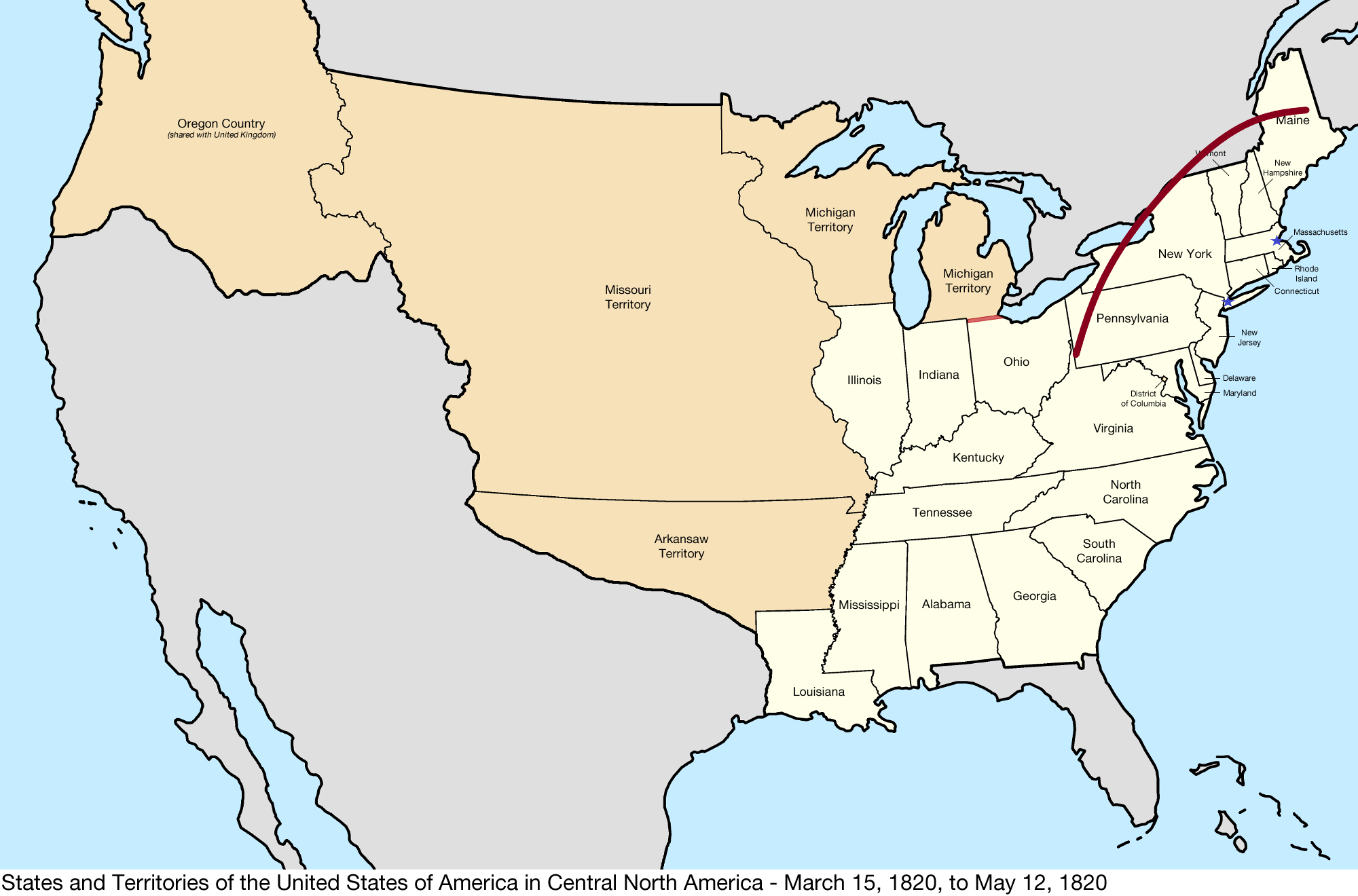
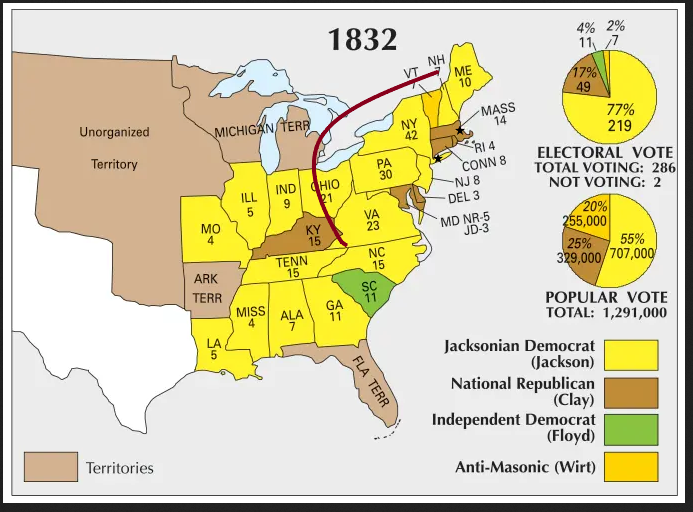
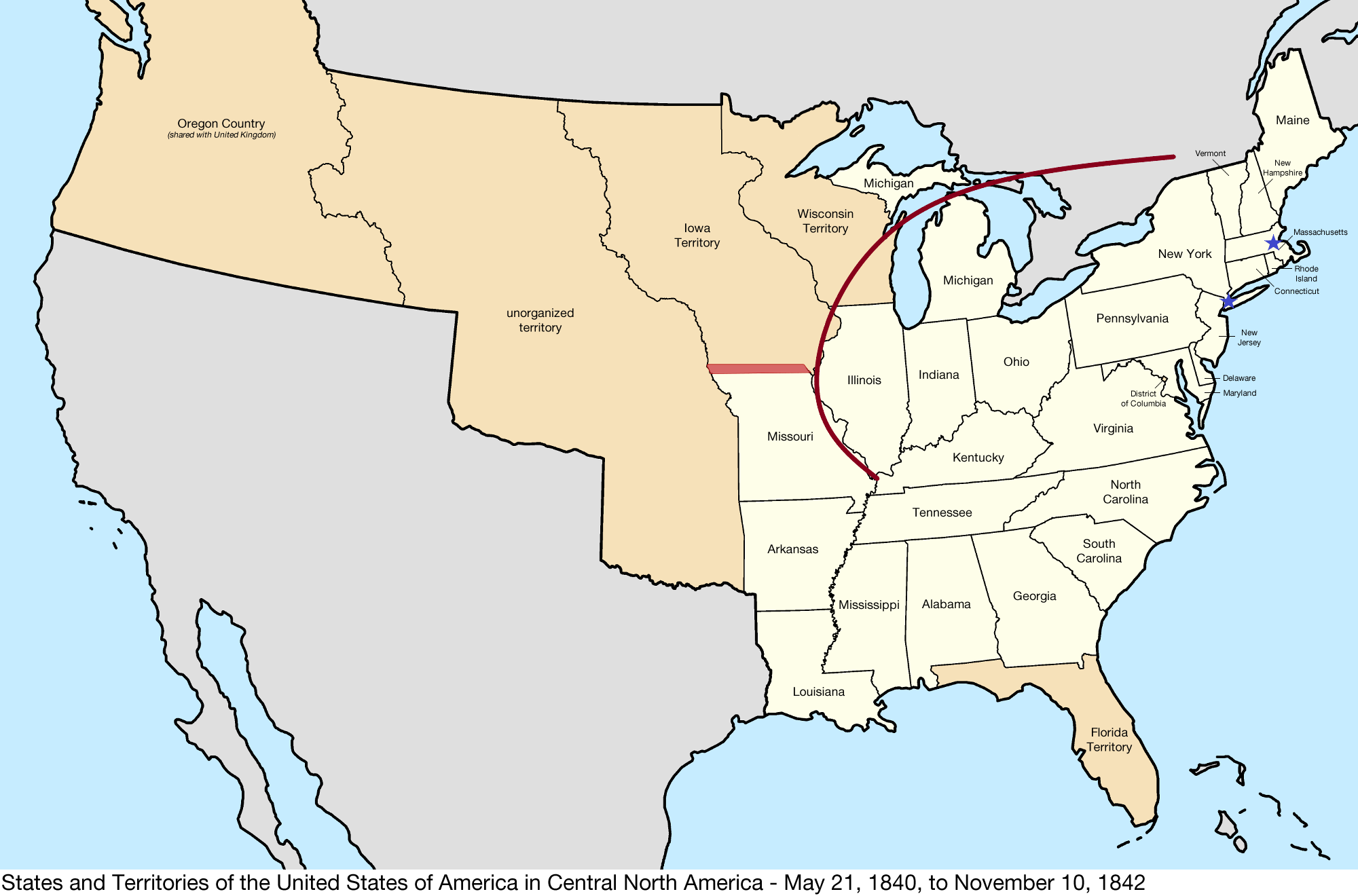
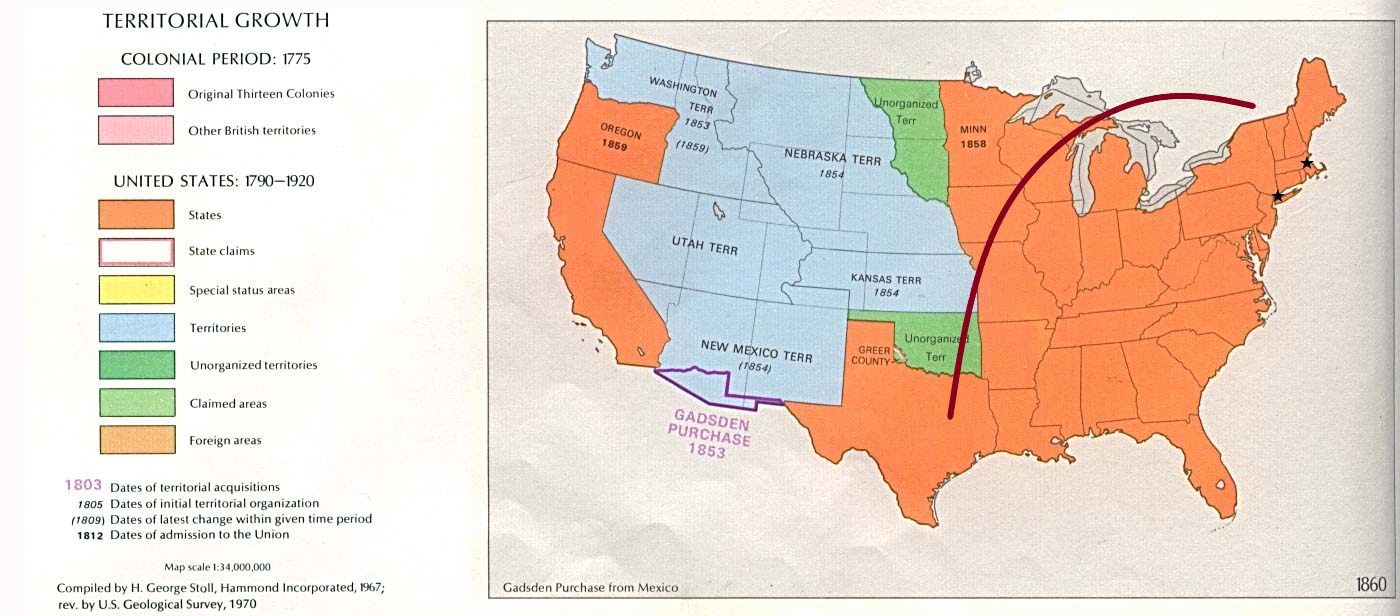
The above shows the red ‘front’ of optimal counterfeiting locations relative to Boston and New York City for 1820, 1830, 1840 and 1860. Southerners had their own counterfeiting problems, but their healthy suspicion of Yankee cultists helped limit Mormon organized crime in their territories. The Southern States, therefore, acted as a natural limit for the ‘front’. Throughout this time period, Canada was important for the counterfeit business and often provided a haven for US-focused counterfeiters. (They would come to regret such partnerships as refugee swindlers preyed on their own people.)
Illinois in the late 1830s could be seen as a weak-law-enforcement area, indeed Illinois politicians— to their own detriment— were at first willing to work with Joseph Smith Jr. to help him evade justice for his war crimes in Southern-States-aligned Missouri. While by 1838 the Stephen Young family had settled in Stephenson County, IL— a fuzzy-jurisdiction border area with the WI territory— Joseph Smith Jr and his army went to Nauvoo, IL, a fuzzy-jurisdiction border area with the Iowa territory.
In Nauvoo, Smith’s first point of business was again to build a colossal temple:
Smith Jr’s Nauvoo temple: this picture was taken shortly after the Mormons were driven out of Nauvoo, IL for the same type of behavior that got them run out of Missiouri.
I think by this point the question on people’s minds is: So was Stephen Young a relative of Brigham Young? Stephen Young did a remarkable job of staying out of New York State and federal censuses during his lifetime, there is much more information available on his wife Louisa Miner, for example. This makes tracing his ancestry difficult; genealogically speaking, he seems to come out of nowhere.
This lack of documentation doesn’t necessarily mean Stephen Young was itinerant for most of his life— it was possible to have gainful employment and be missed by census workers— but avoiding government record keepers is something one might expect a confidence artist to do. Tellingly, Daniel’s grandson William Wesley had a habit of lying to census takers about the birthplace of his parents, for example, in the 1900 census, WW lists his father (Daniel S.) and his mother Amanda as both being born in Pennsylvania. [Daniel S. Young was born in Illinois according to the 1860, 1870 censuses, his wife was born in Pennsylvania.] In the 1910 census, WW states Daniel was from New York state; Amanda was from Pennsylvania. In the 1920 census, WW states Daniel and Amanda were both from Indiana. (Remember WW had taken up service for a foreign government by this time.) In 1930 WW says his father and mother were from New York State and Pennsylvania again… Could this lack of respect for federal authority have been an attitude passed down from his grandfather?
What we can say for sure is that Stephen Young was in the right place (Geauga County) at the right time to have been a Brigham Young relative exploiting his family connection to a well-organized crime syndicate. After Joseph Smith Jr’s murder (while he was waiting to have his trial for treason), Brigham Young carried on the counterfeiting connection with gusto.
The acid test for Stephen Young, Daniel Young and ultimately Art and William Wesley’s connection with organized crime is this: did the family have more money than would be reasonable given their occupation as grocers? To answer that, I provide an excerpt from the pen of Art Young in his first autobiography below. After having attended art schools in Chicago and New York City (1884-89), Art Young studied fine art in Paris (1889-90), living in a hotel opposite that of Oscar Wilde, the decadent writer. Exactly how long he was there is unclear, but he came down with “la grippe, a virulent form of influenza”, which necessitated three doctors; a day nurse and a separate night nurse; US$700 (in 1889!) upfront and immediately for a complicated lung drainage operation; his father traveling to Paris and living there for a matter of months; in addition to Art’s own hotel fees over that time.
I never asked him how much my operation cost; I hadn’t the courage. And there were the nurses’ services, and the hotel expense. My morale was in no condition then to concern myself with financial problems. Father had assumed all the responsibility, and I let things take their course.
In addition to owning his grocery store Daniel Young owned the two-story building on Monroe’s Square which contained it; an almond farm down South; and a fruit farm north of Monroe. Daniel was among the first to invest in telephone technology and the local telegraph office was housed above his store. William Wesley received a college education in Madison; while Art enjoyed the expensive Parisian education described above. The Youngs were remarkably well off for grocers in a small agricultural town.
Naturally, Art records that his father had all the qualities which would endear a person to those Monroe big-wigs who profited from the Republican Party- and Abraham Lincoln-backed Bonelatta Gang: he’d served as an usher at the Lincoln-Douglas debates and attended the Universalist Church in Monroe. Art states:
My father had no worldly ambition. I couldn’t understand why one of his popularity among the townspeople and farmers did not want to get into political office where he could exercise an influence for good in the community. Everybody knew Dan Young, knew him to be a man who had his own ideas of what was right and friendly to all— but for political distinction of any kind, he had no yearning. As a youngster of ambition I thought that just to be a good man, a forthright citizen, was not enough— why was he not mayor, as the local managers of political affairs wanted him to be, at least in one campaign when he was a favorite with the Republican leaders?
To be fair to Art, he hadn’t been born when the “local managers of political affairs” here in Monroe— Arabut Ludlow, Brooks Dunwiddie, the Churchill clan— forced their neighbors who were skeptical about the Civil War to take oaths of loyalty to their cause, nor was Art in town when his father participated in the political persecution and abuse of the Espionage Act against Judge Becker at the will of a Ludlow son. Art Young could easily have been self-absorbed enough not to see that side of his father. Clearly it never occurred to Art that his father might have criminal baggage from the 1860s and 70s which would make him an unsuitable candidate for public office.
Or, perhaps like Joseph Smith Jr and Brigham Young, Art Young excelled at weaving narcissistic fairy-stories about his ancestors which turned real vice into false virtue. If there is any truth to the purported links between genetics and personality types, Art Young certainly had the creative charisma of a Brigham Young-style confabulist.











